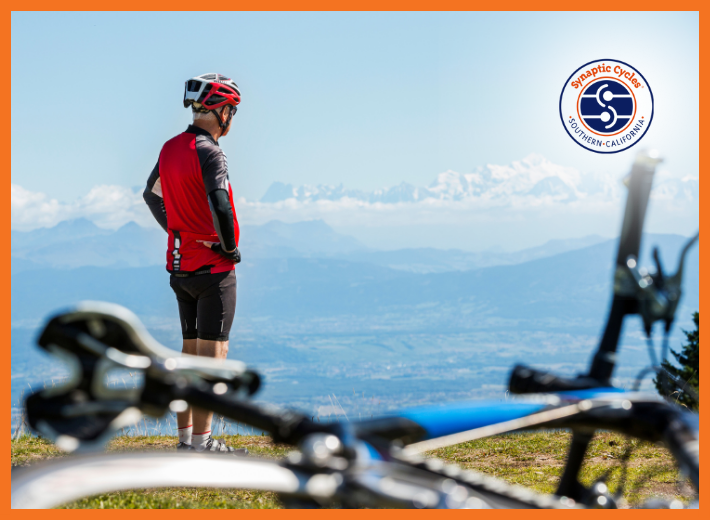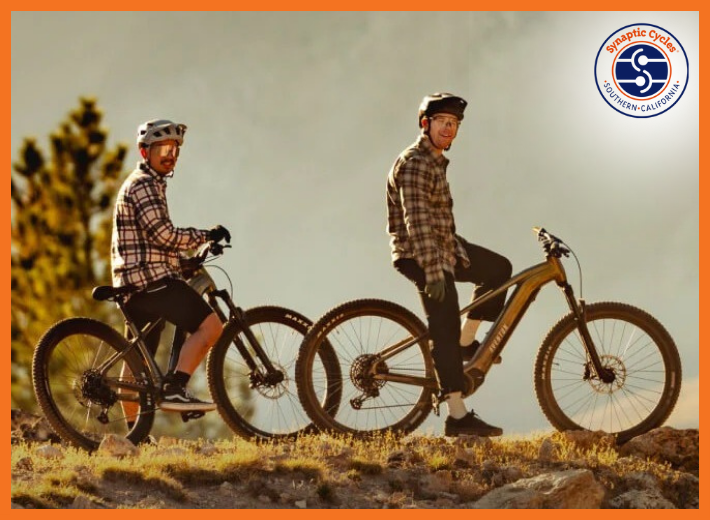Do you wear a helmet whenever you ride a bike? For 4 out of 5 people reading this, the answer is probably no. That’s a fact that needs to change.
Bicycle helmets save lives and prevent injuries. Using the safety gear is considered the single most effective way to prevent head and brain injuries if you should somehow tumble off your two-wheeler.
Consider these facts from a meta-analysis that found using bicycle helmets:
- Reduces serious head injuries by 60%.
- Reduces traumatic brain injury by 53%.
- Reduces the number of cyclists killed or seriously injured by 34%.
Still not convinced that you need to helmet up for your next ride around the neighborhood? Then, let’s look at the issue a little more closely with emergency medicine specialist Thomas Waters, MD.
The need for bike helmets
More than 130,000 bicycle riders are injured every year in the United States following crashes, reports the U.S. Centers for Disease Control and Prevention. Even more alarming? Nearly 1,000 cyclists die annually.
But don’t think these injuries come only from high-speed collisions. Just falling off of a bike on a slow ride — such as circling a cul-de-sac — can leave you pretty banged up.
“If you’re on a bike, there’s a need to wear a helmet,” states Dr. Waters. “You don’t have to be in a high-speed crash to cause significant damage. If you land wrong on your head and you don’t have a helmet on, there’s a chance you could get a serious injury.”
Bicycle helmet laws
A worldwide review of bicycle helmet laws a few years ago noted that 28 countries have helmet-wearing requirements on the books. Many target younger riders, but nine nations have laws that apply to all ages.
In addition, about 250 smaller jurisdictions (such as states and cities) have passed laws calling for helmets to be worn.
Bike helmet safety standards
All bike helmets aren’t created equal. That’s why it’s important to select a helmet that’s met established safety standards. Look for a sticker or label that says the gear is certified by the U.S. Consumer Product Safety Commission (CPSC).
Additional labels may indicate whether the helmet passed safety tests to get the seal of approval from organizations such as:
- American Society for Testing and Materials (ASTM).
- American National Standards Institute (ANSI).
- Snell Foundation.
MIPS helmets
Want to take the protection of your noggin to another level? Then, look for a helmet using MIPS technology, advises Dr. Waters.
MIPS is an acronym for “multi-direction impact protection system.” The safety system offers protection against rotational forces if you fall. “There’s a little give between layers that helps to absorb the force,” he says.
How to properly fit a helmet
 Just plopping a helmet on your noggin isn’t enough to prevent injury. You also need to make sure your helmet fits properly. “If it doesn’t fit right, it won’t be able to do its job,” notes Dr. Waters.
Just plopping a helmet on your noggin isn’t enough to prevent injury. You also need to make sure your helmet fits properly. “If it doesn’t fit right, it won’t be able to do its job,” notes Dr. Waters.
Here are six tips for getting a safe fit for your bike helmet:
- When the chin strap is buckled, a bicycle helmet should have a snug but comfortable fit. You shouldn’t be able to move the helmet from side to side or up and down.
- The helmet should sit level on your head (not tilted back) and rest low on your forehead.
- The bottom edge of the helmet should be one to two finger widths above your eyebrow.
- Another technique to check proper positioning: Your eyes should be able to see the edge of the helmet when looking upward. “The front rim should be barely visible to your eyes,” says Dr. Waters.
- The straps of the helmet need to be even and should form a “Y” that comes together right at the bottom of your earlobe. The straps should be snug against your head.
- The buckled chin strap should leave only enough room for a single finger to be inserted between the buckle and chin. When opening your mouth, you should be able to feel the helmet pull down on your head.
Do bike helmets expire or go bad?
Bicycle helmets may be sturdy, but they don’t last forever. Materials naturally degrade over time with every sweaty mile you pedal. How you care for your helmet and where you store it makes a difference, too.
The CPSC recommends replacing bicycle helmets within five to 10 years after purchase or sooner depending on manufacturer guidelines.
Replacements also should be purchased if you see evidence of:
- Cracks in the shell or liner. A helmet that’s been through a serious fall or crash should be retired from use given the possibility that it may have sustained hidden structural damage.
- A crushed or cracked foam liner. Some foam liners are designed for a single hard impact. Like an airbag in a car, they won’t do the same job protective twice.
- Worn-out straps. A strap that doesn’t … well, strap the helmet down securely is a bit problematic. Replacing straps also isn’t advised.
- Missing pads are other parts. 100% safety requires 100% of the parts.
“The industry is constantly improving, so if you have an older helmet, odds are, there is better technology available now,” says Dr. Waters. “If you have any questions about your helmet, look to buy another one to upgrade.”
Are used bike helmets OK?
It’s best to avoid buying a used bike helmet or even passing a helmet down from one sibling to another. “Helmets adapt to the head that they’re on,” says Dr. Waters. “What fits someone else well probably won’t protect you as it should.”
Tips to encourage children to wear a bike helmet
Want your kid to wear a bike helmet? Start by setting a good example. “You can’t tell your 7-year-old how important it is to wear a helmet and then get on your own bike without one,” says Dr. Waters.
In addition:
- Start the helmet-wearing habit early. “Behaviors are learned,” he adds. “Put a helmet on your child when they start riding a tricycle. Let them grow up knowing it’s the right thing to do.”
- Allow your child to choose their helmet. “Kids are more likely to wear a helmet if they picked it out or decorated it.” Just make sure it fits right and looks cool.
- Talk about why helmets are important. Explain the safety reasons why a helmet should be worn every time you go on a ride.
Can bike helmets be used for other purposes?
Bicycle helmets are designed specifically for impacts that could occur falling off a bike. But multisport helmets may be used to protect your head if you’re cycling or doing activities such as in-line skating, roller skating or riding a kick scooter.
In general, bike helmets shouldn’t be used as a catch-all piece of safety equipment. (Want to learn more? Check out this CPSD guide on recommended helmets for different activities.)
Riding off: Final thoughts
There was a time when very few people wore bike helmets. But that’s changing. Although it’s more common to see helmets on cyclists, usage numbers still remain far too low.
“It has become more socially acceptable to wear a helmet,” says Dr. Waters. “It doesn’t look unusual anymore — and that’s a good and safe change.”
 Explore the city with confidence knowing you’re protected while enjoying the thrill of the ride. Our bikes and eBikes are meticulously maintained, and we prioritize your safety with high-quality helmets and equipment. Call us today at 949.484.6409. Remember to follow us on Instagram @synapticcycles.
Explore the city with confidence knowing you’re protected while enjoying the thrill of the ride. Our bikes and eBikes are meticulously maintained, and we prioritize your safety with high-quality helmets and equipment. Call us today at 949.484.6409. Remember to follow us on Instagram @synapticcycles.
Reference: [https://health.clevelandclinic.org/bicycle-helmet-safety]















